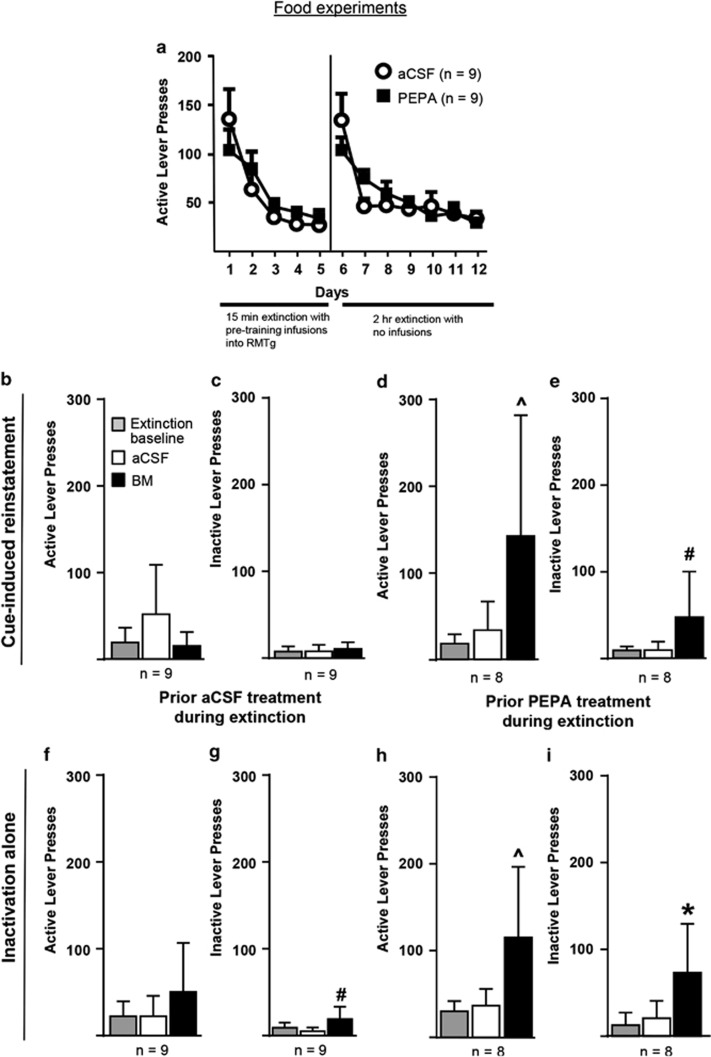Figure 4.
Effect of RMTg activation on extinction following food self-administration and effects of RMTg inactivation on lever pressing during reinstatement tests. (a) Active lever presses (mean±SEM) during extinction sessions for those rats receiving pre-training intra-RMTg microinjections of PEPA or aCSF. Modified non-cue extinction sessions on days 1–5 were 15 min in length with microinjections given immediately before each session, whereas standard non-cue extinction sessions on days 6–12 were 2 h in length with no microinjections. There were no effects of PEPA treatment on active lever pressing for either the modified or standard non-cue extinction sessions. Two-way repeated-measures ANOVAs were also conducted on inactive lever pressing for days 1–5 and 6–12 of extinction learning and found no differences (p>0.05; data not shown). (b, c) Active and inactive lever presses, respectively, (mean±SEM) during a cue-induced reinstatement test for rats that had previously received aCSF during extinction training. (One rat from the extinction experiment did not reach extinction criteria after the cued extinction training in order to undergo reinstatement testing, reducing the total n for the reinstatement tests). Although initial analyses of the data suggested that RMTg inactivation potentiated food-seeking behavior, as with the cocaine seeking, further analyses based on prior aCSF/PEPA treatment during extinction training indicated an interaction between the prior treatment and the inactivation during the reinstatement tests. Therefore, the data from the reinstatement tests were split based on whether the rats had received aCSF or PEPA treatment during extinction (aCSF (b, c, f, g) and PEPA (d, e, h, i). In b, c, there were no significant differences among groups in either panel. (d, e) Active and inactive lever presses, respectively, (mean±SEM) during a cue-induced reinstatement session for rats that had previously received PEPA during extinction training. RMTg inactivation before the cue-induced reinstatement produced a non-significant trend toward increased active and inactive lever pressing. (f, g) Active and inactive lever presses, respectively, (mean±SEM) during the inactivation-alone session for rats that had previously received aCSF. RMTg inactivation had no effects on active lever pressing but produced a trend toward increased inactive lever pressing. (h, i) Active and inactive lever presses, respectively, (mean±SEM) during the inactivation-alone session for rats that had previously received PEPA. Analysis indicated trends toward significantly increased active and inactive lever pressing in those rats whose RMTg was inactivated. *p<0.05 compared with the extinction baseline. #p<0.1 compared with aCSF group. ^p<0.09 compared with extinction baseline and the aCSF group.

